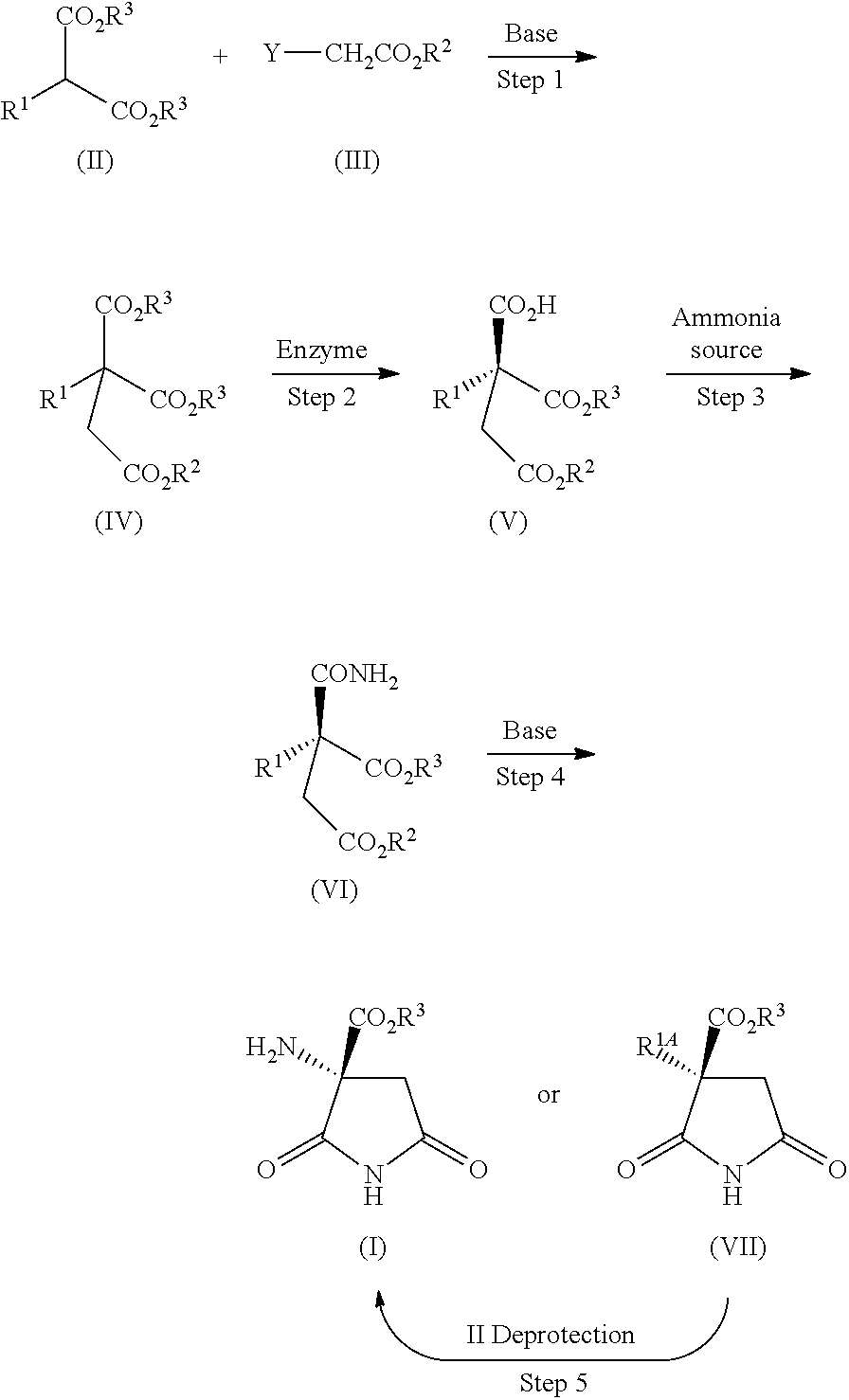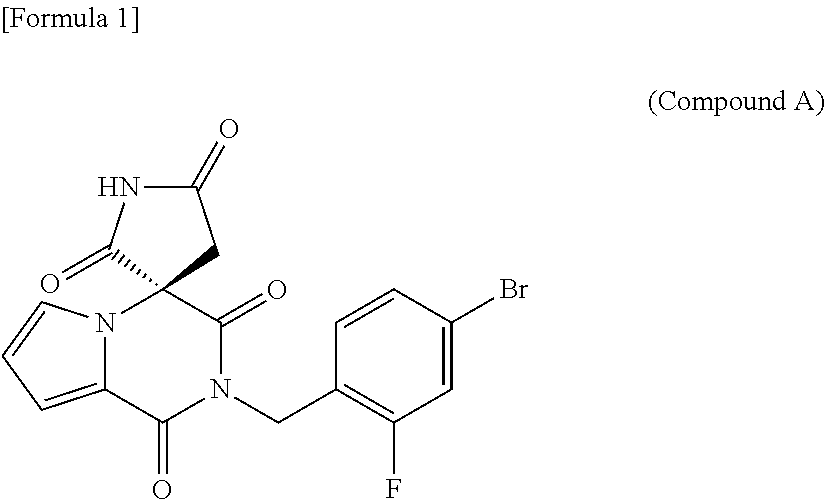Process for producing optically active succinimide derivatives
- Summary
- Abstract
- Description
- Claims
- Application Information
AI Technical Summary
Benefits of technology
Problems solved by technology
Method used
Image
Examples
example 1
Production of Diethyl 2-benzyloxycarbonylamino-2-ethoxycarbonylsuccinate (Ethyl chloroacetate Method)
[0103]A suspension of diethyl 2-benzyloxycarbonylaminomalonate (5.0 g), potassium carbonate (2.7 g), potassium iodide (0.27 g), and ethyl 2-chloroacetate (2.6 g) in DMF (50 mL) was stirred at 50° C. for 1 hour. The reaction mixture was cooled, and then poured into diluted hydrochloric acid, the mixture was extracted with ethyl acetate, and the extract was washed with saturated brine, and then dried over anhydrous magnesium sulfate. The solvent was evaporated under reduced pressure, and the residue was crystallized from ethyl acetate / n-hexane to obtain the title compound (5.5 g, yield: 86%) as colorless crystals.
[0104]1H NMR (CDCl3) δ (ppm): 7.34 (5H, m), 6.39 (1H, s), 5.10 (2H, s), 4.24 (4H, q, J=6.9 Hz), 4.10 (2H, q, J=7.2 Hz), 3.49 (2H, s), 1.21 (9H, m)
[0105]MS (FAB) m / z 396 (M+H+)
[0106]HR-MS (FAB): calcd for C19H26NO8 396.1658. found 396.1653 (M+H+)
example 2
Production of Diethyl 2-benzyloxycarbonylamino-2-ethoxycarbonylsuccinate (Ethyl Bromoacetate Method)
[0107]A solution of diethyl 2-benzyloxycarbonylaminomalonate (50 g) in anhydrous DMF (300 mL) was added portionwise with sodium hydride (60%, 6.47 g) with ice cooling and stirring, then the mixture was stirred at room temperature for 30 minutes, and subsequently added with ethyl 2-bromoacetate (22.6 g), and the mixture was stirred overnight. The reaction mixture was poured into diluted hydrochloric acid, the mixture was extracted with ethyl acetate, and the extract was washed with saturated brine, and then dried over anhydrous magnesium sulfate. The solvent was evaporated under reduced pressure, and the residue was subjected to silica gel column chromatography, in which elution was performed with n-hexane / ethyl acetate (5:1) for purification, and then crystallized from ethyl acetate / n-hexane to obtain the title compound (46.7 g, yield: 83%) as colorless crystals.
example 3
Production of 1-ethyl hydrogen 3-benzyloxycarbonylamino-3-ethoxycarbonylsuccinate (Hydrolysis Reaction of Ester)
(a) Purification of Enzyme
[0108]Bacillus thuringiensis NBRC 13866 provided by the independent administrative agency, National Institute of Technology and Evaluation, Biological Resource Center, Culture Collection Division was aerobically cultured in the GPY medium (medium comprising 1% glucose, 0.5% peptone and 0.3% yeast extract) at 30° C. for 16 hours. Wet cells were collected from the resulting culture by centrifugation (12,000×g, 10 minutes), and suspended in a 0.01 M Tris-hydrochloric acid buffer (pH 8.0). The suspension was subjected to ultrasonication using an ultrasonic homogenizer (NIPPON SEIKI, US-300T) under ice cooling, and then separated into supernatant and residue by centrifugation (12,000×g, 10 minutes). The supernatant was added with ammonium sulfate at a 20% saturated concentration under ice cooling, the mixture was stirred and then centrifuged (12,000×g,...
PUM
| Property | Measurement | Unit |
|---|---|---|
| Fraction | aaaaa | aaaaa |
| Optical activity | aaaaa | aaaaa |
Abstract
Description
Claims
Application Information
 Login to view more
Login to view more - R&D Engineer
- R&D Manager
- IP Professional
- Industry Leading Data Capabilities
- Powerful AI technology
- Patent DNA Extraction
Browse by: Latest US Patents, China's latest patents, Technical Efficacy Thesaurus, Application Domain, Technology Topic.
© 2024 PatSnap. All rights reserved.Legal|Privacy policy|Modern Slavery Act Transparency Statement|Sitemap



